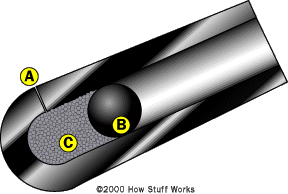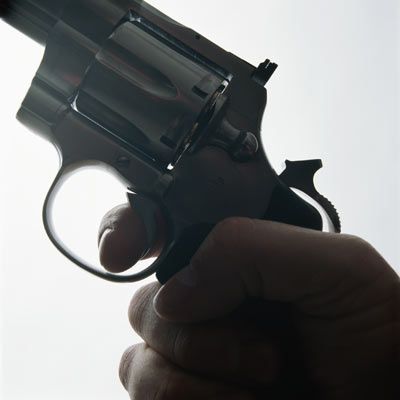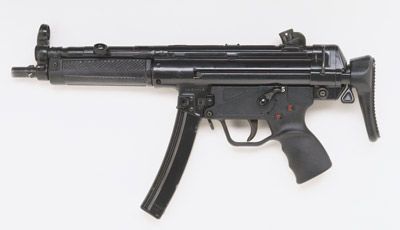A Little History
Guns have been around for an incredibly long time, and they started with the cannon. The World Book encyclopedia discusses the first significant use of a cannon at around 1350 AD, making it one of the oldest pieces of modern technology still in use.

A cannon is a remarkably simple device. It consists of a strong metal tube with a plug at one end. There is a small hole for a fuse drilled through the tube. You load gunpowder into the tube from the open end of the cannon and then insert a cannon ball so that the gunpowder and ball are pressed against the plugged end. You stick a fuse in the small hole and light it to ignite the gunpowder (or you can pour a little gunpowder in the hole and light the gunpowder instead of using an actual piece of fuse). The explosion shoots the cannonball away from the cannon at high speed.
Advertisement
The first guns were essentially hand cannons -- small tubes that the user loaded with gunpowder and a ball and lit from the outside. Around 1400, hand cannons were fairly common, and people were even using four-barrel hand cannons! You loaded each little cannon separately and lit each one when you needed it.
The hand cannon required two technological improvements to make it into a useful tool:
- First, it needed a shape that worked for the shooter -- the early hand cannons were essentially sticks that the shooter held in his or her hand.
- There had to be a good way to light the gunpowder quickly. Wouldn't it be nice if you could fire the gun at the touch of a button (trigger)? It is interesting to think of the early guns as the first button-operated appliances!
A lock is the ignition mechanism for a gun, and several locks preceded the flintlock. For example, the matchlock was simply a piece of slow-burning rope that you would light ahead of time and then move into position to light the gunpowder. The slow-burning rope was attached to a lever that you moved with your finger to rotate it into position -- the first trigger. Obviously, the matchlock had several problems:
- You had to light the rope ahead of time.
- The rope could burn itself out if you took too long between lighting it and firing the gun.
- It glowed, so people could see it at night.
- Rainy weather would put it out.
Despite these problems, matchlocks were common for 200 years because they were a better option than lighting the gunpowder by hand and they were cheap to build.
What the world needed was a way of igniting gunpowder in the barrel of a gun that was instant, reliable and fairly weatherproof. It also needed to be relatively inexpensive and easy to make. The flintlock was the technological marvel that solved all of these problems!


